Common Plastic Molding Materials Advantages
Nov 01, 2022
1. High Efficiency- Fast Production
There are several good reasons that plastic injection molding is is known as the most common and most efficient form of molding. The process itself is extremely fast compared to other methods, and the high production output rate makes it even more efficient and cost-effective. Speed depends on the complexity and size of the mold but only about 15-120 seconds pass between each cycle time.

With the short period between cycles, a greater quantity of molds can be produced in a limited amount of time, thus increasing possible revenue and profit margins. At Rodon, we run parts 24/7 using an MRP system (Material Requirement Planning System). While the MRP system can’t replace the input and experience of manufacturing managers, it does help improve efficiencies within the factory and this, in turn, creates savings for the customer.
2. Complex Part Design
Injection molding can handle extremely complex parts, and uniformity, as well as the ability to make millions of virtually identical parts. To optimize the effectiveness of high-volume injection molding and maximize the precision and quality of your parts, key design elements should be taken into account. The part design must be developed to maximize the efficiency inherent in high-volume molding. With the right design, parts can be made consistently and with quality. Without a good design, costly processing mistakes can be made.
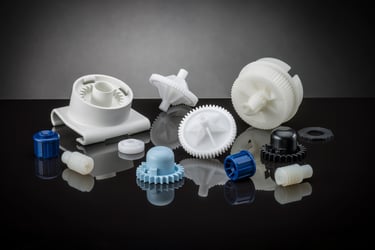
Around the industry, most molding professionals agree that there are fundamental design elements that must occur during the injection process to work correctly. They include wall thickness, rib design, boss design, corner transitions and weld lines and gate placement, and properly placed vents. You can learn more about all of these elements here.
3. Enhanced Strength
Strength is one of the key factors that need to be determined when designing a plastic injection molded part. The designer will need to know if the part needs to be flexible or rigid so that he/she can adjust the integrating ribs or gussets. Understanding how the customer will be using the partand what type of environment the part will be exposed to is also important.
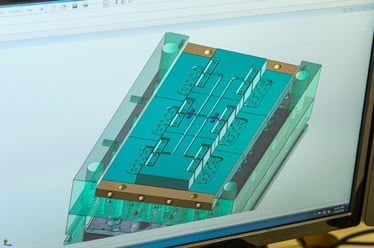
Finding the proper balance of design considerations will help address your part’s need for strength and stability. Material selection plays another key role in the strength of the part. See below for more information on the types of resins used in the process.
4. Flexibility- Material and Color
Choosing the right material and color for a project are two of the essential factors in creating plastic parts. Due to the wide variety of both, the possibilities are almost endless. The advances in polymers over the years have contributed to the development of a large selection of resins from which to choose. It is important to work with an injection molder that has experience with a variety of resins and applications including resins that are compliant with FDA, RoHS, REACH and NSF. To ensure you select the right resin for your project, keep in mind the following variables: impact strength, tensile strength, a flexural modulus of elasticity, heat deflection and water absorption.
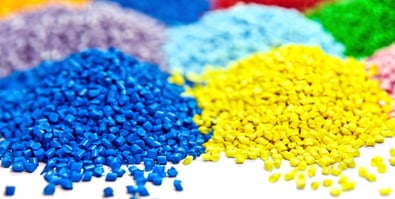
Plastics can be colored using various coloring systems, each of which offers its own unique properties, benefits, and drawbacks. Masterbatches,”salt and pepper” blends, Liquid Color, and precolored resins are four of the most common coloring techniques. To learn more, check out our recent article on how plastic resins get their color.
5. Reduced Waste
When looking for a high-volume injection molding partner, it’s important to consider companies’ green manufacturing initiatives, as these signify a commitment to quality, sustainability, and optimal safety. During the molding process, excess plastic is generated. You want to look for a company that has a system in place to recycle its excess plastic. The most eco-friendly plastic injection molding companies employ state-of-the-art machinery to assist them in minimizing waste, transportation, and packaging.
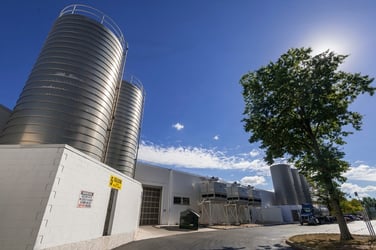
At The Rodon Group, we’re committed to nurturing an ethos of environmental sustainability in everything we do. Over the years, we’ve instituted many green initiatives, all of which have helped us become one of the most sustainable leaders in the injection molding industry. Visit our Sustainability page to learn more about these initiatives.
6. Low Labor Costs
Labor costs are typically relatively low in plastic injection molding, in comparison with other types of molding. The ability to produce the parts at a very high level with a high output rate helps with its cost efficiency and effectiveness.
The molding equipment typically runs with a self-gating, automatic tool to keep operations streamlined and production ongoing, requiring minimal supervision.
7.10 Types of Plastic Shaped Materials
Nylon (PA)
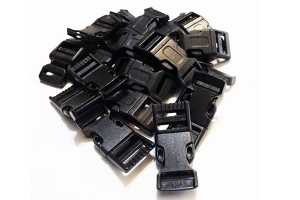
Nylon is often used to produce strong mechanical parts like bushings, gears, and bearings. It’s very common in automotive applications because not only is it tough but it helps to reduce weight and lower production costs compared to a metal analogue. You should be aware that, although it’s a strong plastic, it tends to absorb water. It’s not the ideal choice for marine applications. Nylon is also known by its chemical designation PA (Polyamide).
Acrylic
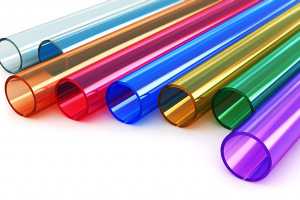
We use acrylic to produce transparent parts such as windows, view screens, and various lighting equipment. It’s often used as an alternative to glass due to its high tensile strength and weather and scratch resistant nature. It takes dyes and colorants very well so you can produce many aesthetic effects. On top of its optical and transparent properties, acrylic is odorless and tasteless and doesn’t contain Bisphenol A (BPA). BPA is a harmful organic compound, so plastic injection molding resins like acrylic are considered safe for food storage.
Polycarbonate (PC)

Polycarbonate is another clear injection moldingresin that has excellent optical properties and is extremely durable. When molding with this amorphous thermoplastic material, precise dimensional control can be maintained as it has predictable and uniform mold shrinkage. We use polycarbonate when we need something substantially stronger than acrylic. However, be aware that if you’re making optically clear plastic parts the mold tool must be highly polished, which in turn implies the use of a higher grade of stainless steel that costs more. Now, you can see that your choice of plastic resin can very much influence the appropriate mold tool material as well.
Polyoxymethylene (POM)
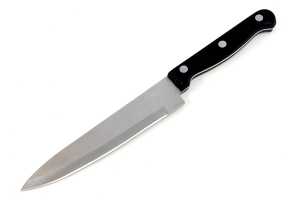
Polyoxymethylene (POM) is a type of acetal resin used to make mechanical and automotive parts that would usually be made with metal. This engineering thermoplastic material is very strong, tough, and rigid. It’s often used to produce gears, fasteners, knife handles, and ball bearings. Although POM has high resistance towards solvents such as alcohols, gasoline, detergents and motor oils, it shouldn’t be exposed to hydrochloric acid and nitric acid.
Polystyrene (PS)
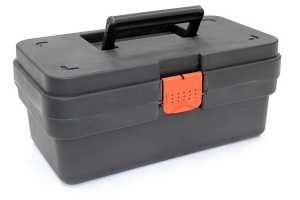
When it comes to injection molding resins, there are two types of polystyrene that are commonly used: High Impact Polystyrene (HIPS) and General Purpose Polystyrene (GPPS). GPPS is transparent, while HIPS is opaque. Hard cases for toolboxes and bodies of power tools are also made using High Impact Polystyrene. As with so many things there is a tradeoff to be aware of. On the one hand, PS is tough and durable. It can take a lot of abuse in the field. But that also means it’s not very environmentally friendly.
Acrylonitrile Butadiene Styrene (ABS)

ABS resin is an opaque thermoplastic polymer and an engineering grade plastic. There are many advantages to using ABS. It’s tough, has good dimensional stability, it resists impacts and scratching, and is hard to break. Also, the low melting temperature makes it easy to mold. It’s commonly used to produce electronic parts such as phone adaptors, keyboard keys, and wall socket plastic guards. Why is this? Because ABS is a good insulator and won’t conduct electricity or give off fumes if it’s exposed to fire. These are important considerations for product developers working on electrical devices.
Polypropylene (PP)
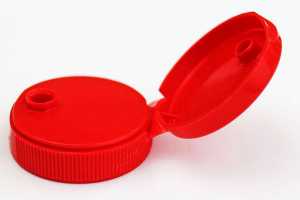
This thermoplastic injection molding material is widely used in the food storage and packaging industry because it doesn’t let chemicals mix with food products. Polypropylene (PP) can be washed in hot water without degrading, and it has high chemical and moisture resistance. PP has incredible impact strength, elasticity, and toughness. Designers should also note that PP is easy to recycle, and because of its flexibility, it can be used to make live hinges that can be bent many times without tearing.
Polyethylene (PE)

Polyethylene (PE) is a lightweight thermoplastic molding material that has high chemical resistance, elasticity, and electrical insulating properties. It’s not especially strong or hard, but it’s inexpensive. You’ll find it everywhere in consumer plastic parts, milk bottles, medicine and detergent bottles, plastic bags, and trash cans. PE is also the most common injection molding resin for making toys because it’s non-toxic and can take a beating without complaint.
Thermoplastic Polyurethane (TPU)

Thermoplastic Polyurethane (TPU) is soft and elastic, with great tensile and tear strength. That’s why it’s often used to make parts that demand a rubber – like elasticity. You should know that TPU is more expensive than other resins but for many applications, like protective wire and cable sheaths, there really is no substitute. Another advantage is that TPU improves the grip for products that need to be held securely in the hand.
Thermoplastic Rubber (TPR)

Thermoplastic Rubber (TPR) resin is actually a mixture of plastic and rubber, and it’s easy to use in the injection molding process. It has outstanding chemical and weather resistance and high impact strength. Because of this, TPR is used in many types of fluid dispensers, flexible hoses, catheters, and other places containing different liquids, including acid.
You can find this recyclable material in medical catheters, suspension bushings and headphone cables. Thermoplastic rubber is also known as thermoplastic elastomer (TPE).

